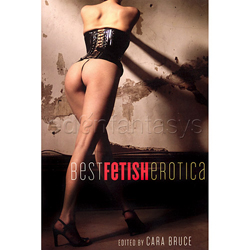The 21st Century and the New Millennium
By the 20th Century, the kinks might have been different than those in bygone times, but they were no less kinky. Vladimir Nabokov’s watershed novel, Lolita—the 1955 tale pedophilic Humbert Humbert and his quest to keep his 12-year-old object of obsession in his life by marrying the girl’s mother—was, and continues to be in some circles, considered scandalous. Nabokov himself was so freaked out by his own manuscript, he nearly burnt it. He didn’t have to worry. It was banned in a number of countries anyway.
The Naked Reader Book Club Reviews Felice Newman, publisher and co-founder of Cleis Press, points out that it was Barney Rosset of Grove Press who took the plunge against book-banning and censorship when by publishing the full text of D.H. Lawrence’s Lady Chatterly’s Lover for the first time in 1959—31 years after it’s original 1928 publishing date. “He was quite the hero,” Newman says, “He published D.H. Lawrence and it was banned as pornography. It was a big, courageous thing.”
Copies of the book were confiscated by the U.S. Post Office. In an ensuing lawsuit, it was decided that the material was not obscene. Grove didn’t stop there. They also published a full text of Henry Miller’s Tropic of Cancer, which also caused a firestorm and, in 1973, prompted the U.S. Supreme Court to invoke a new standard, The Miller Test, for deciding whether a work could be banned (a test which is still used to define censorship standards today).
Miller’s Rosy Crucifixtion trilogy, Sexus, Plexus and Nexus would be published in 1949, and while he enjoyed great acclaim, his lover and colleague, the hugely influential Anaïs Nin, would have a little more trouble getting her star to shine across the seas.
When she was a teenager, Nin found some French paperback erotica in an apartment her family had rented and read all the books. When she’d finished, she wrote in her diaries: “I had my degree in erotic lore … I became aware of maisons closes, red-light districts, prostitutes on the boulevards, the meaning of drawn curtains in the middle of the afternoon, hotels by the hour, the role of Parisian hairdressers (the great procurers) and the acceptance of separation between love and pleasure.”
Nin and Miller both began writing erotica for $1 a page, but she had more trouble finding a publisher in America (though she had done well in Europe) and eventually resorted to buying her own printing press to get her work out.
The Naked Reader Book Club Reviews Felice Newman, publisher and co-founder of Cleis Press, points out that it was Barney Rosset of Grove Press who took the plunge against book-banning and censorship when by publishing the full text of D.H. Lawrence’s Lady Chatterly’s Lover for the first time in 1959—31 years after it’s original 1928 publishing date. “He was quite the hero,” Newman says, “He published D.H. Lawrence and it was banned as pornography. It was a big, courageous thing.”
Copies of the book were confiscated by the U.S. Post Office. In an ensuing lawsuit, it was decided that the material was not obscene. Grove didn’t stop there. They also published a full text of Henry Miller’s Tropic of Cancer, which also caused a firestorm and, in 1973, prompted the U.S. Supreme Court to invoke a new standard, The Miller Test, for deciding whether a work could be banned (a test which is still used to define censorship standards today).
Miller’s Rosy Crucifixtion trilogy, Sexus, Plexus and Nexus would be published in 1949, and while he enjoyed great acclaim, his lover and colleague, the hugely influential Anaïs Nin, would have a little more trouble getting her star to shine across the seas.
When she was a teenager, Nin found some French paperback erotica in an apartment her family had rented and read all the books. When she’d finished, she wrote in her diaries: “I had my degree in erotic lore … I became aware of maisons closes, red-light districts, prostitutes on the boulevards, the meaning of drawn curtains in the middle of the afternoon, hotels by the hour, the role of Parisian hairdressers (the great procurers) and the acceptance of separation between love and pleasure.”
Nin and Miller both began writing erotica for $1 a page, but she had more trouble finding a publisher in America (though she had done well in Europe) and eventually resorted to buying her own printing press to get her work out.






Comments